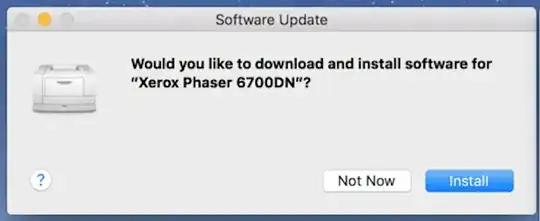In an environment where users connect their devices to printers through USB, the device will be prompted to install its driver if it's the first time. As far as I'm aware for OSX, the drivers are downloaded from Apple and you can't download without internet connection.
For example, this huge 100MB driver: http://www.support.xerox.com/support/phaser-6700/downloads/enus.html?operatingSystem=macosx1010&fileLanguage=en&x=16&y=5
- What privileges & capabilities does the driver have on the users machine when installed?
- How are drivers registered to this Apple repository (Equivalent for Microsoft, etc)? How are driver modifications handled & pushed?
- Can the printer be modified so that the device is requested to download the wrong driver? (eg for a different model printer, although still from Apples repo)? Can the printer protect the integrity of which driver it requires?
- How can someone analyze the driver and effectively reverse-engineer it to understand what it's doing?
- Is there existing, open source printer drivers that can be installed to eliminate this threat model entirely?
Hypothetical threat: A printer is purchased, and modified to become non-existent model ABC1. A malicious driver that is then created & registered as a publicly available driver for a 'legitimate' printer model ABC1. This implanted driver is then used for ______, either on connection to the printer in future or LAN or otherwise.
